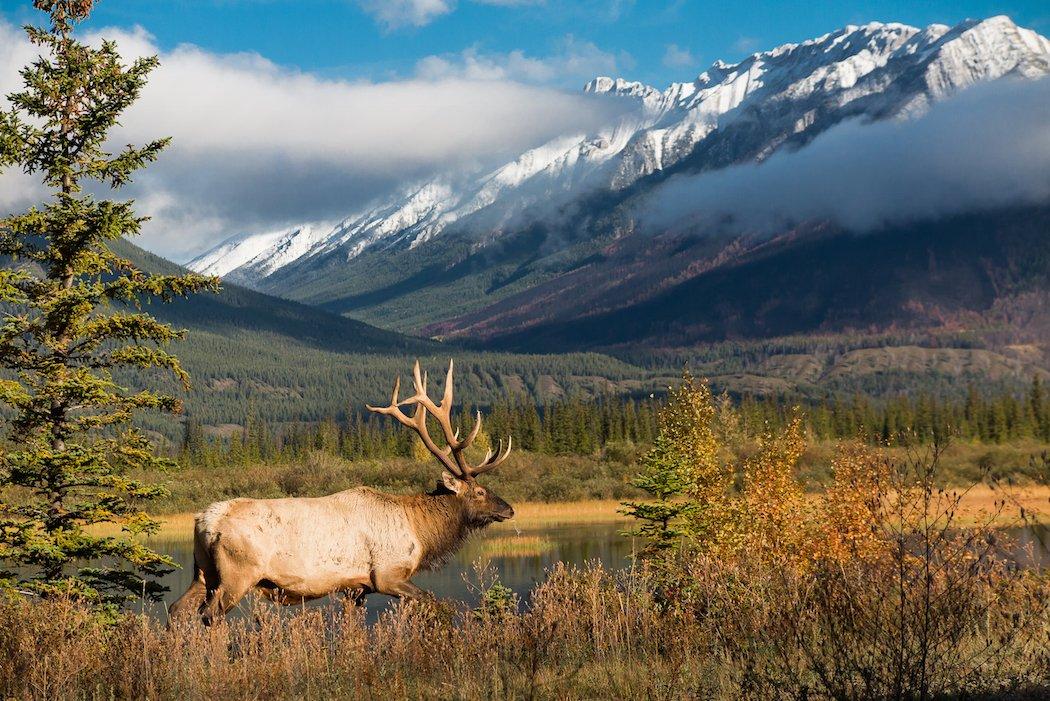How Many of These Tips Do You Already Employ?
Elk hunting is a serious sport for serious hunters. There's nothing easy about it. And there are many elk enthusiasts who have a wealth of knowledge. Here we have seven great tips from hunters throughout the country.
1. Truly Understand the Meaning of Elk Hunting
It's not just about killing an animal. It's about connecting with nature and appreciating the American wilderness for what it is -- one of the greatest gifts we have in this nation.
"Shut off from the outside world, it's a hunter's paradise, bounded by walls of mountains and containing miles of grassy open spaces more green and beautiful than any manmade parks," Charles said. "These parks and the mountains behind them swarmed with deer, elk, mountain sheep, bear, besides beaver and other small fur-bearing animals. The creeks were alive with trout. Nature had surely done her best. No king of the old times could have claimed a more beautiful and bountiful domain."
2. Use Available Resources
Take advantage of available resources. There are many things you can do to make your elk hunting experience a better one.
"The Outfitter's Camp is a listing of big-game outfitters, guides and hunting consultants," John said. "Members of the Elk Foundation who demonstrate their concern for elk, other wildlife and conservation through their support of the Foundation. The Elk Foundation is not involved in the management of these businesses and cannot guarantee the services provided, though."
3. Special Drawings for Elk Tags
Really enjoy quality elk hunting? Don't overlook special tag-drawing opportunities. And don't think you have to be rich in order to take advantage of them. Some specially dontated elk tags don't always sell as expensive as you might think they would.
"States and provinces award certain hunting permits to be auctioned at banquets and events," Joe said. "Also, hunts and other prizes are donated for charity purposes, too. Be sure to contact the appropriate state wildlife department and organizations for further information about any tag you are interested in."
4. Packing with Horses
Most elk hunters who pack in with horses or mules cause some environmental disturbance to trees and underbrush. Many even tie stock to trees or fashion a hitching post out of material at hand, and environmental destruction occurs. Here is a tip for no-impact backcountry horse tying.
"Use a high line between two trees and tie in sliding eyes," said Jerry. "These are made out of 1/4-inch mild steel, and are available at tack stores and through outfitter supply catalogs. With tension off the lead rope, a sliding eye can be adjusted anywhere on the high line to suit your horses' needs. With tension on the lead rope (the horse pulling on it), friction keeps the sliding eye from moving."
5. The Art of Finding Elk
"To actually see elk, begin by thinking about these questions," said Bill.
- Where would elk find food, water and shelter in this season? Talk to state biologists. They oftentimes mark quality food and water sources and sometimes share this information.
- Is this the time of year when elk are in groups? If so, listen for their vocalizations. A variety of chirps, squeals, mews, chortles and barks will give elk away.
- What is the day like? On a hot summer day, elk might be on a cool, windy ridge or along forest edges and creek bottoms. On a cool day, they might be in a protected valley or canyon.
- What time of day is it? Elk are often feeding an hour after sunrise and before sunset. During the day, they might be resting in a sheltered spot and chewing their cud.
- Is your timing right? For example, a rutting elk herd is easier to find than a non-rutting herd. If in doubt, delay your trip.
6. Tracking Down Your Trophy
Stay off to the side of the blood trail when tracking wounded game.
"Don't move forward until the next drop of blood is found," Ron said. "This helps prevent disturbing the sign left behind. Move slowly and check ahead. Mimic another elk as you track, especially after bad shots. Use extreme caution. You might get another shot. And always watch for predators."
7. Being a Real Snap Shot
All elk hunters should carry a camera. You never know when you'll have an opportunity to take a photo of some beautiful scenery. Such instances encapsulate memories that will last a lifetime.
"Several times when I've encountered elk on the move, I've blown on my cow call and got them to stop long enough for me to get a good look at them," said Phil.
You never know when that perfect time for a photo will be. And it's good to have a camera to take photos after the hunt, too.
Don't Miss: 3 Weird Elk Hunting Tactics That Work
Are you a big game hunter wanting to learn how to accomplish your goals? Check out our stories, videos and hard-hitting how-to's on big game hunting.








